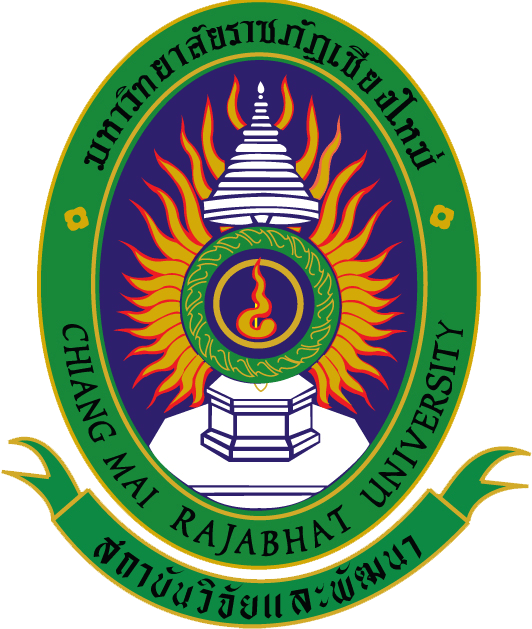
ระบบสารสนเทศงานวิจัย สถาบันวิจัยและพัฒนา มหาวิทยาลัยราชภัฏเชียงใหม่
Research Information System(RIS)
พัฒนาวิถีสมุนไพรของกลุ่มชาติพันธุ์เพื่อยกระดับชุมชนอย่างยั่งยืน
อาจารย์นริศรา วิชิต
คณะเทคโนโลยีการเกษตร
คำสำคัญ :
เลขทะเบียน :
1362-63-AGRI-TSRI
บทคัดย่อ
โครงการวิจัยเรื่อง พัฒนาวิถีสมุนไพรของกลุ่มชาติพันธุ์เพื่อยกระดับชุมชนอย่างยั่งยืน มีวัตถุประสงค์ศึกษาภูมิปัญญาท้องถิ่นด้านการใช้สมุนไพรในกลุ่มชาติพันธุ์เทศบาลตาบลแม่นะ อาเภอเชียงดาว จังหวัดเชียงใหม่ และนามาศึกษาสารออกฤทธิ์ที่สาคัญในสมุนไพร และแปรรูปเป็นผลิตภัณฑ์จากสมุนไพรเพื่อสร้างอาชีพให้ชุมชน จากการสารวจพบว่ามี 3 หมู่บ้านที่มีการใช้สมุนไพรเป็นยาในชีวิตประจาวัน คือ บ้านปางมะโอ บ้านแม่แมะ และบ้านสันป่าเกี๊ยะ และพบว่าสมุนไพรที่มีจาหน่ายเพื่อสร้างรายได้ของชุมชนมีทั้งสิ้น 15 ชนิด ได้แก่ เถาเกล็ดปลา ม้าแม่ก่า กาลังเสือโคร่ง จักค่านผา ฮ้อสะพายควาย โด่ไม่รู้ล้ม เลือดไน่ หัวข้าวเย็นเหนือ กาลังไก่แจ้ ฮากเหลือง อบเชย หญ้าดอกขาว ต้นขนุนดอย เครือข้าวตอก และกูดฮ้อม
เมื่อนาสมุนไพรทั้ง 15 ชนิด วิเคราะห์หาปริมาณฟีนอลิกทั้งหมด โดยทาปฏิกิริยากับโฟลิน ซีโอแคลทูรีเอเจนต์และเปรียบเทียบกับกราฟมาตรฐานของสารละลายกรดแกลลิก ปริมาณฟลาโวนอยด์ทั้งหมดโดยทาปฏิกิริยากับรีเอเจนต์ต่างๆ และเปรียบเทียบกับกราฟของสารละลายมาตรฐานเควอซิติน และความสามารถในการต้านอนุมูลอิสระโดยทาปฏิกิริยากับดีพีพีเอช พบว่า สมุนไพรทั้ง 15 ชนิดสามารถตรวจพบปริมาณฟีนอลิกและฟลาโวนอยด์ทั้งหมด และมีความสามารถในการต้านอนุมูลอิสระ และเมื่อนาสารสกัดจากพืชสมุนไพรผสมกับมอลโตเด็กซ์ตรินและทาแห้งด้วยเทคนิคการทาแห้งแบบพ่นฝอย พบว่า ปริมาณฟีนอลิกและฟลาโวนอยด์ทั้งหมดมีค่าลดลง แต่ความสามารถในการต้านอนุมูลอิสระเพิ่มขึ้น จึงสามารถนาพืชสมุนไพรมาแปรรูปเป็นผงสมุนไพรบรรจุแคปซูลเพื่อจาหน่ายและสร้างรายได้ให้กับชุมชนได้
Abstract
Research project on developing herbal ways of ethnic groups to enhance communities sustainably. The objective of this research was to study the local wisdom on the use of herbs in the ethnic groups of Mae Na Sub-District Municipality, Chiang Dao District, Chiang Mai Province, as well as to study the main active ingredients in herbs were also studied, and processed into herbal products to create a career for the community. According to the survey, there were 3 villages where herbs were used as medicine in daily life: Pang Ma-O Village, Mae Mae Village and San Pa Kien Village. There were 15 types of herbs that were available to generate income for the community, namely, Phyllodium elegans (Lour.) Desv., Polygala chinensis L., Strychnos axillaris Colebr., Piper sp., Sphenodesme mekongensis Dop, Elephantopus scaber var. scaber L., Polygala longifolia Poir., Smilax corbularia Kunth, Anaxagorea luzonensis A. Gray, Uraria oblonga (Wall. ex Benth.) H.Ohashi & K.Ohashi, Cinnamomum spp., Vernonia cinerea (L.) Less., Artocarpus heterophyllus Lam., Aerva sanguinolenta (L.) Blume and Lepisorus longifolius (Blume) Holttum.
All 15 herbs were analyzed for total phenolic content by reacting with the folin-ciocalteu agent and comparing it with the standard curve of the gallic acid solution. Total flavonoid content by reacting with various reagents and compared with the curve of the quercetin standard solution and the ability to fight free radicals by reacting with DPPH. It was found that all 15 herbs were able to detect total phenolic and flavonoid content. These herbs have antioxidant abilities. When herbal extracts were mixed with maltodextrin and dried by spray drying technique, the total phenolic and flavonoid contents were reduced, but the ability of antioxidants increases. Therefore, medicinal plants can be processed into herbal powders and capsules to sell and generate income for the community.
ไฟล์งานวิจัย
31 27 เม.ย. 2563
สำนักงานคณะกรรมการส่งเสริมวิทยาศาสตร์ วิจัยและนวัตกรรม (สกสว.)
สำนักงานคณะกรรมการส่งเสริมวิทยาศาสตร์ วิจัยและนวัตกรรม (สกสว.) ชั้น 14 อาคาร เอส เอ็ม ทาวเวอร์ 979/17-21 ถนนพหลโยธิน แขวงสามเสนใน เขตพญาไท กรุงเทพฯ 10400
02 278 8200
callcenter@trf.or.th, webmaster@trf.or.th